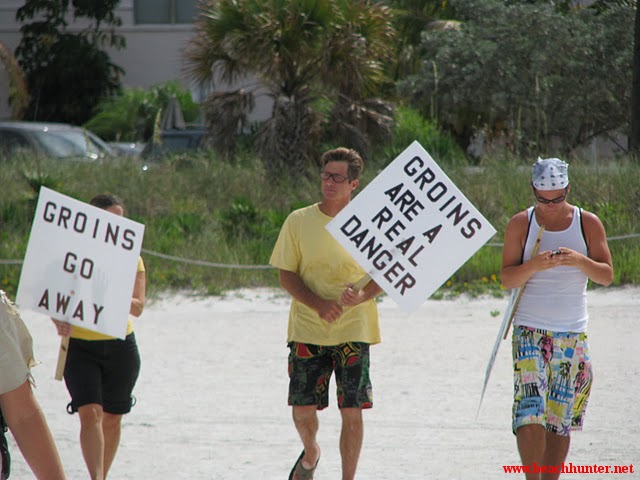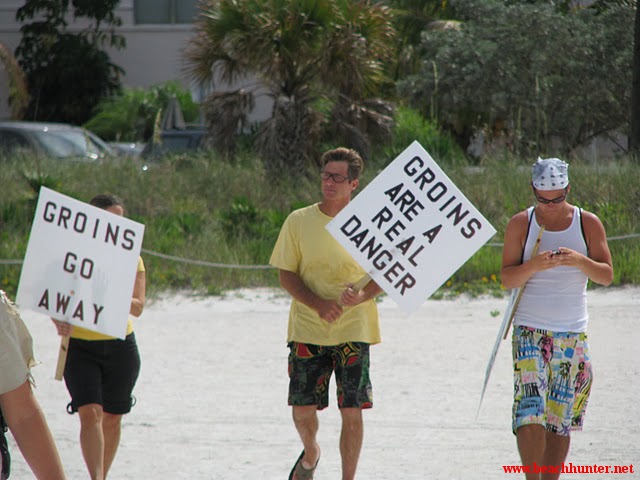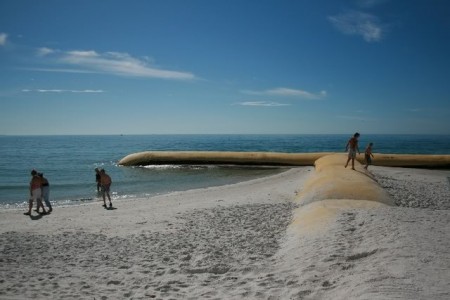
Why the Groins Do Not Work as the Permanent Solution for Upham Beach/Long Key.
On February 9th 2010 the Suncoast Chapter of Surfrider held a Free Upham meeting. To view the slide-show from the presentation CLICK HERE. The presentation included the following information which was submitted to the DEP (Florida Department of Environmental Protection):
2011 Upham Cover Letter to DEP
The rock T-Groins should not be installed for the following reasons:
- Current Project has not met the 50% overall sand saving projection
- Financial feasibility and cost saving calculations contain errors
- Project has not proven nourishment cycle will be lengthened to 6 years
- Safety hazard of rock implementation has not been addressed
- Diminished recreational usage of public beach has not fully been addressed
- Public has not been advised the total cost of combined rock implementation equates to an estimate of $17 million
What is missing from the public mainstream to make an educated decision?
- Updated Inlet Management Plan – current one is dated 1992. Why are we making decisions off a plan that is almost 20 years old? The beach is an ever changing and dynamic organism. If the county is to make a multimillion dollar decision which will alter Mother Nature permanently, they should be using an up-to-date plan.
- Extension of the profile lines in the monitoring of performance. Why are they cut-off when the extension is completely feasible as they are already out taking measurements? In addition, while minor, the profile Lines cross over the structures to include their mass calculations as sand savings.
- Placement of 85,000 cubic yards of sand to mitigate for down drift effects is not taken into consideration to determine downdrift affects. Neither the sand disbursement in May 2008 nor the 40 ft. closures of the southern jetty, as well as, the shoal build-up, were calculated into performance data. Will structure provide beach front protection for up to a CAT 3 hurricane – NO! Thus, are the groins truly assisting the sand savings, or are all the other dynamics coming into aid?
- In 1993 253 signatures got the groins a first look, in 2004 475 signatures got the project started, in 2008/9 over 1,000 signatures in opposition were turned into record but did not result in getting the project pulled? If you are a resident in Pinellas county – you pay fpr the project in 5 ways via tax dollars; if you are a resident of the state of Florida – you pay 3 ways. If you are a resident of the USA or a tourist – you pay.
- Upham has not been slated to receive as much sand as it has in the experimentation process (to include 2010 placement). According to Alyssa St. John’s report, from 1975 – 2000, Upham Beach has received 930,000 cubic yards. According to the recent amounts of sand, from 2004 to include the 2010 upcoming nourishment, the total equates to 856,000 cubic yards. If you add in roughly 80,000 cubic yards for the untold May 2008 movement, a 25 year period of sand placement history is equal to the last 6 years.
How you can help save your Break:
- Tell your friends, family, colleagues, etc. and send them the bullet points
- Send a letter to the Pinellas County Commissioners, the Governor, and your State Senatoron why you believe the T-Groins are not the solution (see Government info section for links – don’t forget to tell us you did)
- Fundraising and education events to get the word to the people
- Be the government watch-dog for upcoming meetings or announcements relating to Upham and notify the chapter
- Attend government meetings and support your chapter representatives – or speak your mind!
- Writers – letters to the Editor of local/state/national papers. Remember, the Nation is paying for the project through county, state, and federal funds
Any press/media inquiries should be directed to (click here)


